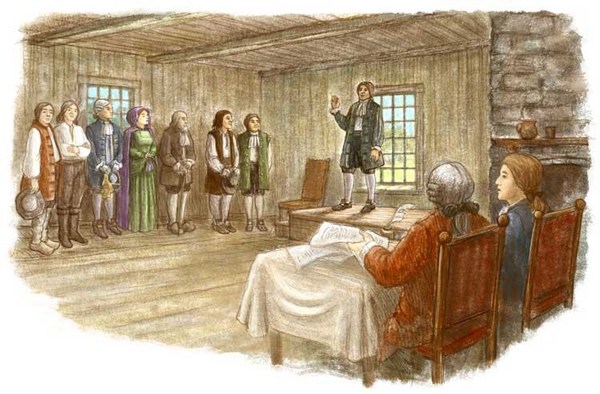- Women in the DCB/DBC
- Introduction
- Women Voting before 1851
- Coming Together to Demand the Vote
- The Right to Vote and Women’s Demands
- Relations with Militants and Organizations in Other Countries
- The Right to Vote in Municipal Elections
- The Right to Vote in Provincial and Territorial Elections
- The Right to Vote in Federal Elections
- Indigenous Women’s Right to Vote
- Opposition, Indifference, and Doubt
- Suggested Reading
Women Voting before 1851

Source: Link
The fact that women who met eligibility criteria [see Introduction] could vote in legislative elections in Lower Canada, Upper Canada, New Brunswick, and Nova Scotia in the 18th and 19th centuries bemused immigrants and visitors, such as the judge and politician William OSGOODE:
“Passing through Montreal in July 1792 [Osgoode] was surprised to find that women could vote ….”
Between 1834 and 1851 laws were adopted in these colonies and in Prince Edward Island to make it illegal for women to vote. In the case of United Canada, this is demonstrated in the biography of the lawyer and politician Robert BALDWIN:
“[Baldwin] was not sympathetic to expansion of women’s legal rights, and in 1849 his government took away the virtually unused right of … women who met the property qualification to vote.”





